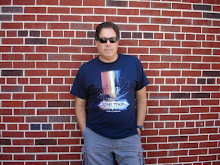Wednesday, July 24, 2013
LONGEST DAY, THE
(October 1962, U.S.)
In Nick Clooney's book "The Movies That Changed Us", he particularly cites Steven Spielberg's SAVING PRIVATE RYAN (1998) as a war film that brought today's generation of young people (well, at least when they were still young at the end of the last century) into the proper awareness of the history of World War II and it's effective place in human history. To (presumably) do this, Spielberg's film gives a deep, thought-provoking perspective from that of the American soldier in combat with all the bloody graphics that would logically accompany it. This is all very valid, I'm sure, but I would argue that such a claim would be highly dependent on one's age, one's generation and one's personal exposure to war films and war history, in general. Young kids in the late 1990s would have surely flocked to the local multiplex to see the great Tom Hanks in a Steven Spielberg film a whole lot faster than perhaps watching a marathon of old John Wayne war films on Turner Classic Movies over the Memorial Day weekend. For myself, as a young person growing up in the 1980s, my exposure to war films was mostly whatever black and white film any of the independent TV channels chose to broadcast over the weekend or late at night. And of course, there was VHS video for those who were interested enough in exploring the WAR section of the local video store. Hence, that last example was how I inevitably discovered what I still consider to be my favorite war film of all time, THE LONGEST DAY.
This epic black and white film, which producer Darryl F. Zanuck took enormous pride in attaching his name to, is about D-Day and the Normandy landings on June 6, 1944 of World War II. It features a large international ensemble cast that includes John Wayne, Robert Mitchum, Richard Burton, Sean Connery, Henry Fonda, Red Buttons, Rod Steiger, Peter Lawford, Eddie Albert, Gert Fröbe, Curd Jürgens, Robert Wagner, Sal Mineo, Edmund O'Brien, Roddy McDowall and Paul Anka. Many of these actors play roles that are virtually only cameo appearances and therefore, we're not exactly meant to get to know any of the soldier's characters that personally for any great length of time. The film is done in the style of a docudrama. Beginning in the days leading up to D-Day, it concentrates on events on both sides of the channel such as the Allies waiting for the break in the poor weather and the anticipation of the Axis forces defending northern France. It also pays particular attention to the decision by General Eisenhower (played by an incredible look alike named Henry Grace), supreme commander of SHAEF, to go after reviewing the initial bad weather reports as well as the divisions within the German High Command on when an invasion might happen or what response to it should be. Numerous sequences document the early hours of June 6th when Allied airborne troops were sent in to take key locations in combat. The French resistance is also featured reacting to the news that an invasion has started. Most of the important events surrounding D-Day are very well chronicled here; from the British glider missions to secure Pegasus Bridge, the counterattacks launched by American paratroopers scattered around Sainte-Mère-Église, the infiltration and sabotage work conducted by the French resistance and SOE agents, and the response by the Wehrmacht to the invasion and the uncertainty to whether it was a feint in preparation for crossings at the Pas de Calais. Some of the most impressive combat scenes include the advance in shore from the Normandy beaches, the United States Ranger Assault Group's assault on the Pointe du Hoc, the attack on Ouistreham by Free French Forces and particularly the strafing of the beaches by two lone Luftwaffe pilots in a spectacular sweeping shot that defines true black and white cinematography and photography with not only combat, but with explosive effects of the time. By the film's conclusion, we're witnessing a montage showing various Allied units consolidating their beachheads before the advance inland begins to inevitably liberate France.
Truly unique for British and American produced World War II films of the time, all the French and German characters speak in their own languages with subtitles in English. For the viewer, this is perhaps the most authentic and effective way to experience the true war film from all sides of the globe to not only include our heroes, but our enemies, as well. From my own personal perspective, World War II has always been a black and white experience for me on film. It's just the way I was raised with war films on television. And so, while Spielberg's more modern, colorized experience of the horrors of war may be what the more recent generation of filmgoers needed to understand our American history of war, it's the epic (and black and white) experience of THE LONGEST DAY that has and continues to peak my interest and appreciation of documenting war on film. Like I said, it's my favorite war film!
Favorite line of dialogue:
Lieutenant Colonel Benjamin Vandervoort (John Wayne): "You can't give the enemy a break. Send him to Hell!"
Subscribe to:
Post Comments (Atom)



No comments:
Post a Comment